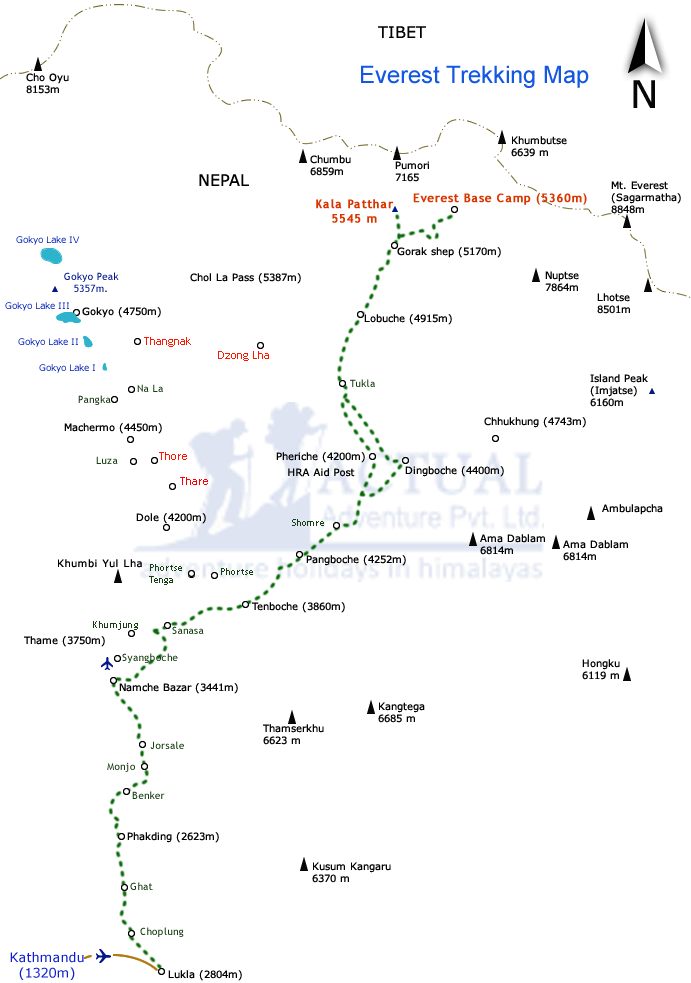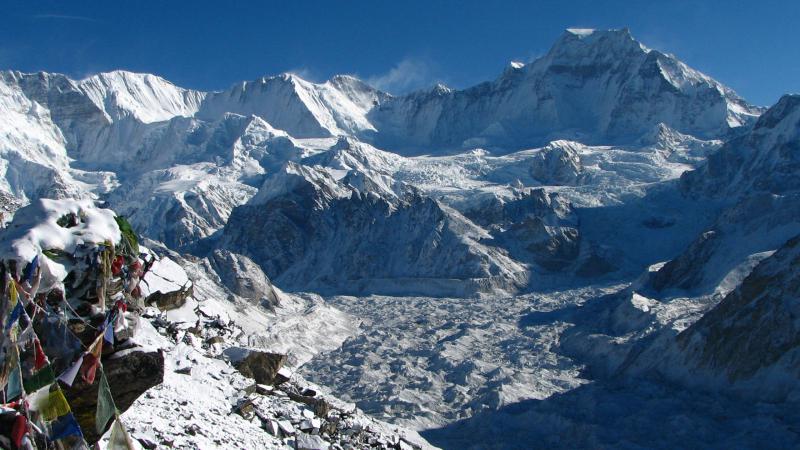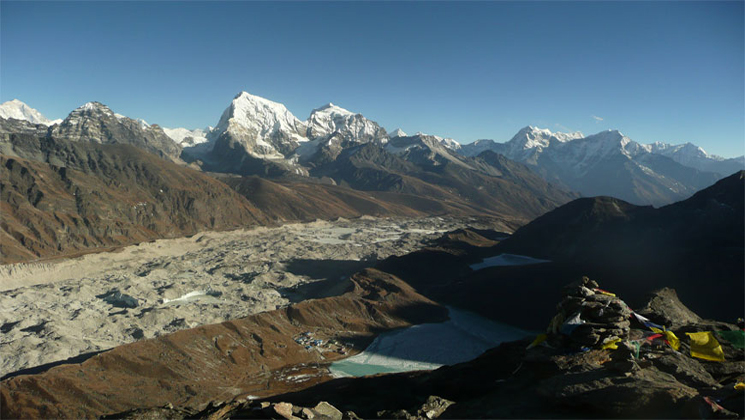Altitude sickness, also known as acute mountain sickness (AMS), altitude illness, hypobaropathy, or soroche, is a pathological effect of high altitude on humans, caused by acute exposure to low partial pressure of oxygen at high altitude. It commonly occurs above 2,400 metres (8,000 feet).[1][2] It presents as a collection of nonspecific symptoms, acquired at high altitude or in low air pressure, resembling a case of 'flu, carbon monoxide poisoning or a hangover.[3]. It is hard to determine who will be affected by altitude-sickness, as there are no specific factors that compare with this susceptibility to altitude sickness. However, most people can climb up to 2500 meters (8000 ft) normally.
What causes it?
The body's muscles and organs need an adequate supply of oxygen to function properly. As altitude increases, the percentage of oxygen in the air remains constant but the pressure decreases, meaning we breathe in fewer oxygen molecules with each breath.
This leaves the body short of its requirements and causes altitude sickness.
Who's affected?
It's well known that mountaineers may be affected by altitude sickness, but anyone at high altitudes can experience symptoms. This includes people who fly to high-altitude destinations and those who go on walking and trekking trips.
What are the symptoms?
How severely someone is affected by altitude sickness depends on how high they go and how quickly they ascend. It's unusual for altitude sickness to occur below 2,400m (8,000ft).
When altitude sickness occurs because the body is not getting enough oxygen, mild symptoms may include:
- Tiredness
- Headache
- Nausea
- Unsteadiness
For most people, symptoms start after about six hours of being at high altitude. As long as the person remains at the same altitude, the symptoms will usually disappear within one or two days.
Vomiting, chest pains and shortness of breath are signs that someone is affected more severely. These symptoms may take a day or two to appear.
Coughing up frothy sputum is a sign that fluid is collecting in the lungs, while clumsiness and difficulty walking can occur if the brain swells.
If severe cases of altitude sickness aren't treated, fits, confusion and coma may follow.
What's the treatment?
It's important not to ignore altitude sickness. If symptoms are mild, rest, fluids, a light diet and painkillers will enable the body to acclimatise. No further ascent should be attempted until all the symptoms have disappeared.
Descending to a lower altitude is often necessary when symptoms are more severe. If this fails to resolve symptoms, hospital treatment is needed. Any swelling of the brain will be treated with oxygen, rest and drugs.
Most people who are treated correctly for altitude sickness make a full recovery, usually within a few days. However, when the condition is more severe, treatment over a longer period may be necessary.
Can it be prevented?
Problems with altitude sickness can usually be avoided if care is taken to prepare properly. Climbers, in particular, are all too aware of the importance of:
- Good physical fitness
- Staged ascents that allow time to acclimatise
- Drinking plenty of liquid
- Being aware of the possibility and the symptoms of altitude sickness
- Not ignoring symptoms of altitude sickness if they occur
 Actual Adventure Pvt. Ltd.
Actual Adventure Pvt. Ltd. Actual Adventure Pvt. Ltd.
Actual Adventure Pvt. Ltd. 

























